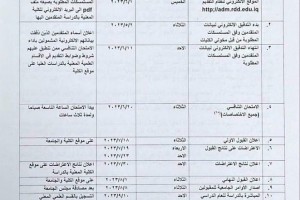
A seminar entitled "Structural Style and Tectonic Evolution of the Zubair Oil Field, Southern Iraq". Hold at the College of Science, Geology Department. The presenter Aymen Adil Lazim demonstrates the most important objectives of studying the structural and tectonic analysis of the Zubair oilfield to identify the fault and fold patterns and assess their impact on the distribution of the reservoir properties within the field. The Study conducts a detailed structural geological analysis of the fractures and folds of the four anticlines—Hammar, Shuaiba, Rafdyia, and Safwan—within the Zubair oilfield, and proposes a tectonic model of the field from the Jurassic period to the present. The results reached that The Zubair oilfield hosts multiple faults across four anticlines, with folding active since the pre-Jurassic. Faults and folds likely formed due to Hormuz salt movement, basement fault activity, and Arabian–Eurasian plate collision, potentially affecting oil distribution within the field. The study recommends that, utilizing the results of this study, the geological model of the field can be updated to support future petroleum studies and to assist in the preparation of future drilling plans.







